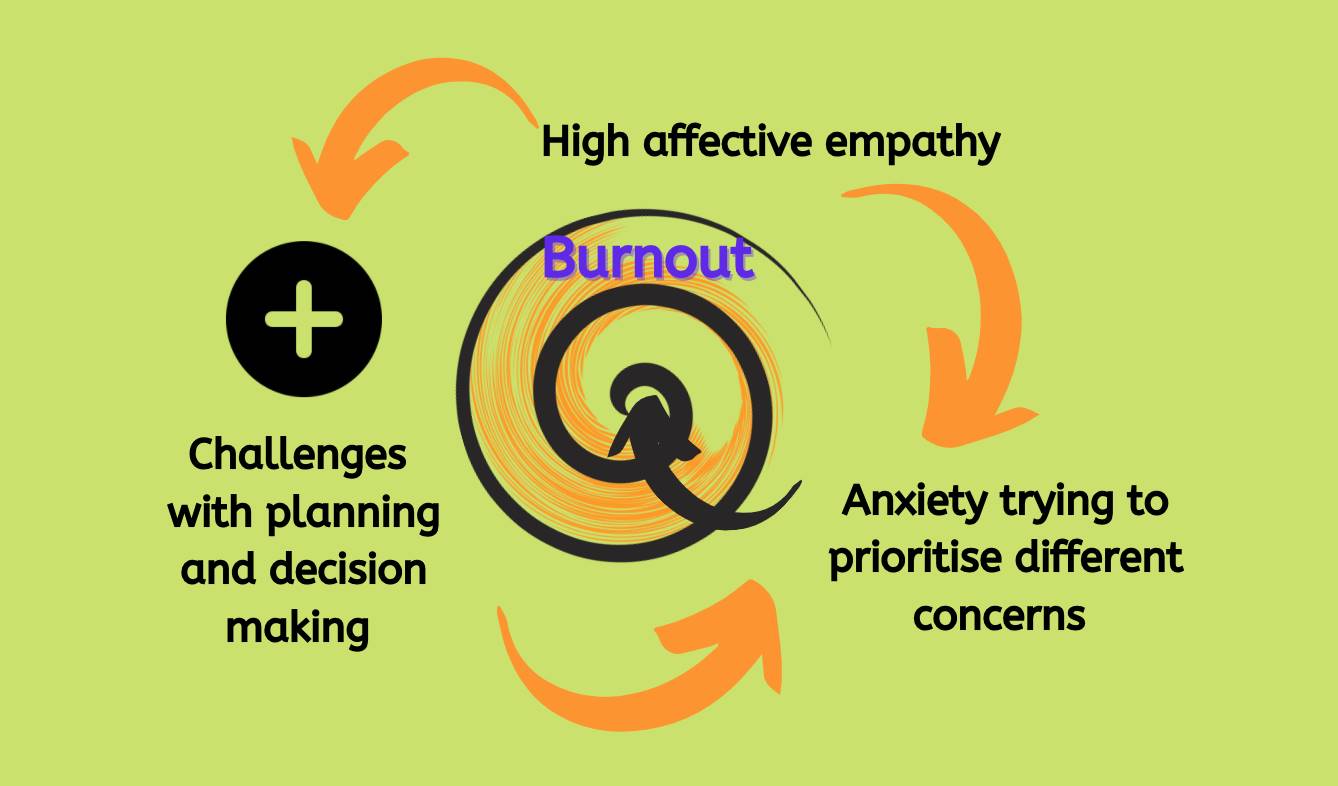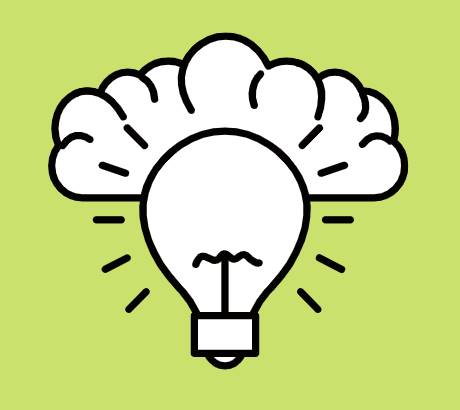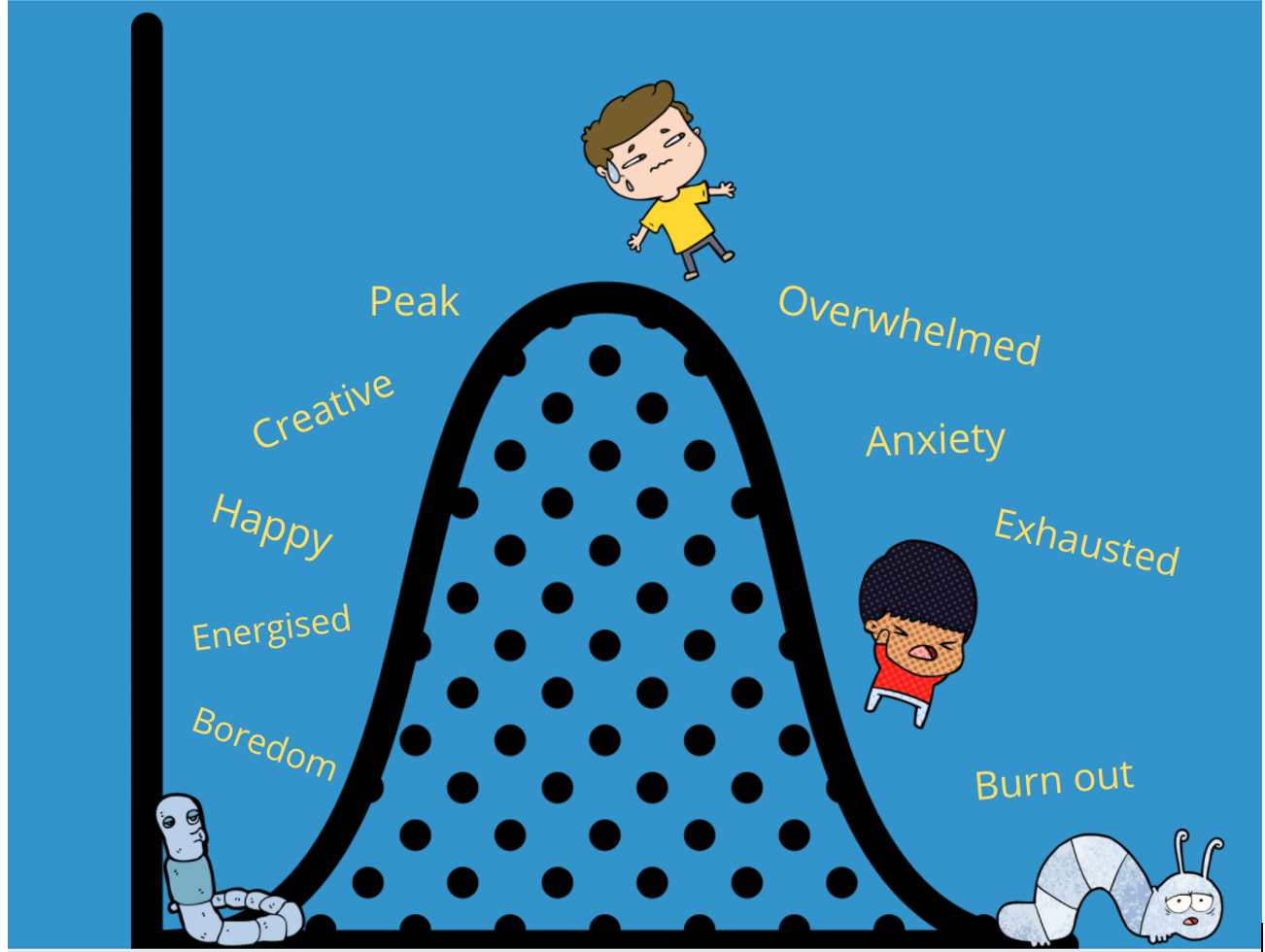A roller coaster of intertwined emotions?

This week I am thinking about some complex interactions in the way we behave day-to-day and how for some, this may result in exhaustion and ‘burnout’.
**Go to the end of the newsletter if you just want some tips to help with preventing ‘burnout’**
Maybe we can stop the cycle from being repeated again and again, by understanding the prequel.

What is burnout?
Burnout is seen as a state of mind that comes with long-term, unresolved stresses that can negatively affect your work and your life. In an ideal world, we would not wait until we are at breaking point and try to step back and recognize this pattern and put some preventative strategies in place.
I hear some neurodivergent colleagues and friends describe this cycle, and the damage it does to their confidence, and self-worth.
I wondered if some people are at an even greater risk of ‘burnout’ than others and consider how this may relate to anxiety, empathy, and especially neurodiversity.
Anxiety is a bed-fellow with Developmental Coordination Disorder( Dyspraxia). I studied this in adults in and out of employment and there were high levels in both settings.

About 40% of people with Autism Spectrum Conditions also have Anxiety; More than 15% of people with Dyslexia have anxiety, and between 25-40% of people with ADHD have been reported to be anxious also.
* Remember that ADHD/ASC/Dyslexia/DCD all often overlap with each other, and is the rule rather than the exception.
What is empathy?
Empathy comes from the Greek word empathetic meaning passion. Empathy is the ability to experience and understand what others feel without confusion between oneself and others. Knowing what someone else is feeling plays a fundamental role in interpersonal interactions. It is important for moral reasoning as well as prosocial behavior. It is also sometimes described as meaning ‘the ability to understand and share the feelings of another. We can sometimes confuse this with sympathy which relates to ‘feelings of pity and sorrow for someone else’s misfortune’.

Some people have divided empathy into cognitive and affective components (Singer, 2006)

· Affective empathy is the capacity for an individual to understand someone else’s feelings and emotions by sharing these through observation or imagination of the experience (Singer & Lamm, 2009). This aspect of empathy creates compassionate actions (Baron-Cohen & Wheelwright, 2004). It is your deep feeling for others.
· Cognitive empathy has been described as the understanding of what someone else’s emotions may be, without being emotionally involved (Shamay-Tsoory, Aharon-Peretz, & Perry, 2009). I see this as being able to perspective take and allows you to stand back in some ways from the emotions you are feeling e.g. you may be concerned about World peace but know you are unlikely to be able to influence it!
Are you easily bored? How does this relate to neurodiversity?
A link between neurodiversity and empathy?
What is interesting and relevant to neurodiversity is this interplay with cognitive and affective empathy. Empathy is assisted by other cognitive abilities such as executive functions, perception of visual cues ( how we perceive what we are seeing), and how language is shaped and used, and influenced by our social and cultural contexts (Decety, Norman, Berntson, & Cacioppo, 2012). Cognitive empathy also requires decision-making (whether or not to act on the emotional situation being witnessed (or being read about in the papers or on TV).
I am always interested in people’s strengths in neurodiversity. As a consequence of this and because of my clinical experience working with 1000s of people with a range of neurodivergent traits I undertook research relating to Developmental Coordination Disorder (Dyspraxia) and empathy. I had noted clinically (and personally) many people who were very kind and sensitive. But sometimes this kindness and caring could also cause high levels of anxiety as they worried a lot about everything and everyone. This became like a heavy jacket weighing them down.

My colleague and friend Dr. Miri Tal-Saban, and I became interested in the intersection between cognitive and affective empathy in adults with DCD (Dyspraxia). We found higher rates on average of affective empathy in people with DCD compared to those without DCD. Meaning that some people with DCD strength was higher levels of empathy.
I wonder if you care a lot about others does this cause vicarious anxiety and leave you feeling constantly worried especially when combined with lowered ‘cognitive empathy’?
Neurodiversity and Executive Functioning

Challenges in executive functioning are very common in people with ADHD, Autism, Dyslexia, and DCD (Developmental Coordination Disorder) (Dyspraxia). Executive functioning also needs you to be able to have perspective and not get sucked into the middle of it!
Decision-making is thought to be affected by:
(a) your past personal experiences that you can recollect from the past. So, if there are things in your past that have been challenging for you, you may become anxious thinking about how what is happening now relates to this. High levels of anxiety stop you from moving forward because of these fears.
(b) your executive functioning skills such as working memory (how you process information, store it, and then recall it), your ability to not do something ( also called inhibition), and your ability to forward planning.

(c) your ability to appraise what has happened and learn about this for next time such as learning from past mistakes.
Some researchers have concluded that low affective empathy is the key empathy component related to antisocial behavior (Zonneveld et al., 2017).
Are some people more prone to ‘burnout’ than others?
I wonder if some people who care very much about others (high affective empathy) get into a cycle of ‘tend and befriend’ reaching out and trying to sort out everyone else’s problems, worrying about everyone else, and then going into emotional overdrive as a consequence. This then leads for some to the job (and home) ‘burnout’. Some people also describe ‘human giver’ syndrome too as another presentation.
I also wonder ( I wonder a lot!!) if this is something that happens more for some people with particular neurodivergent traits. It’s almost like going into overdrive and you can’t stop until you are completely exhausted. I describe it as a car without gears and a non-existent braking system. You only stop when you crash and hit a wall ( sorry for the metaphors!) I have had conversations with a lot of people with ADHD/DCD describing this to me and I sort of recognize this in myself too!
One study from 2006 did find more people with ‘burn out’ had ADHD and some also Post Traumatic Stress Disorder. Interestingly, also in a study of pharmacists in 2016 in Japan showed that those with ADHD and with Autism Spectrum Conditions had a greater risk of ‘burnout’.
<I am thinking that if fatigue is also part of this complex mix (and commonly reported in people with neurodivergent traits), then this doesn’t help with managing anxiety levels or being able to prioritize both actions and emotions. ( …another newsletter to come on this).>

What is job burnout?
Job burnout is seen as a special type of work-related stress and seen as a state of physical or emotional exhaustion that also involves a sense of reduced accomplishment and loss of personal identity. Burn-out is included in the 11th Revision of the International Classification of Diseases (ICD-11) as an occupational phenomenon. This is not a medical diagnosis as such but a descriptor.
“Burn-out is a syndrome conceptualized as resulting from chronic workplace stress that has not been successfully managed. It is characterized by three dimensions:
· feelings of energy depletion or exhaustion;
· increased mental distance from one’s job, or feelings of negativism or cynicism related to one’s job; and
· reduced professional efficacy.”
Can we stop burnout from happening?

Different people have described the stages:
· The honeymoon phase. When we undertake a new task or job, we often start by experiencing high job satisfaction, commitment, energy, and creativity. It feels great.
· The balancing act (the top of the curve) as opposed to the unbridled optimism and positiveness of that first phase, we are now clearly aware that some days are better than others regarding how well we are handling the stress on the job. Some days it does feel like we are going to fall off our perch and we are juggling too many balls ( sorry for all the metaphors!)
· Teetering over – this is often a time if you recognize it you have a last chance to step back and gain some control.
· Down the steep slope – At this stage, you are likely to have some physical sensations of feeling stressed and you may have one or more of the following headaches, backache, stomach upset and sleep disturbance, and a feeling of anxiety at times.
You are becoming more focused on work frustrations and are pessimistic some of the time. You ruminate more and replay words people are saying to you. You feel more easily criticized and have less elastic stretch to cope on the not-so-good days.
You just feel you want to run away or withdraw from everyone and put your head under the covers.
· At the bottom. This is depression. You are not enjoying the things you used to, you have sleep disturbance, crying for no reason, not wanting to engage at all with others. Drinking or using substances to ‘block out’ your emotions.
Recognizing the signs of ‘distress’
This is never just about work and usually a combination of factors at home and work.
Some questions to ask yourself.
· Have you become cynical or critical at work?
· Do you have a feeling of dread on a Sunday evening?
· Do you have trouble getting started and motivating yourself?
· Have you become irritable or impatient with co-workers, customers or clients?
· Do you avoid participating in conversations with others unless you have to?
· Do you find it hard to concentrate?
· Do you lack satisfaction from your achievements?
· Are you using food, drugs, or alcohol to feel better or to reduce feelings?
· Have your sleep habits changed?
· Are you troubled by unexplained headaches, stomach or bowel problems, or other physical complaints?
Reflection about ourselves and how we behave can allow us to try to get ahead of the curve and not wait for burnout to happen again and again. Repeated events can certainly impact well-being and self-confidence.
12 steps to reduce future risks of burnout

1. Recognise that you are ‘at at risk’ of burnout and anxiety. I think this is especially important if you have traits that lean towards having either an on or off button and you keep going until exhaustion.
2. Think about the patterns that led up to this if it has happened before – talk about this with someone close to you. Are you working longer hours with fewer breaks and with less definition of your working day?
3. See casual chatter as important e.g. have an online lunch with colleagues sometimes if you are working remotely, give a friend a call for a 5 minute catch up.
4. Plan breaks away from the computer and set an alarm to do so.
5. Define what is ‘not working’ – If you can move away from your desk between meetings and have a one no-meeting day into your working week. Avoid going back to your desk at off-work times. Close your laptop, and turn off notifications.
6. Focus on one task at a time – don’t keep checking emails between tasks do them in batches.
7. Increase the frequency of regular goal setting as this may be important in making changes happen and reviewing what is working. Try to set goals for what must get done and what can wait. Be realistic.
8. Feeling Overwhelmed? Discuss how you can prioritize your work and consider if you need training in specific skills or coaching support. ( Access to Work in the UK may be a route for this).
9. Seek support. Whether you reach out to co-workers, friends, or loved ones, support and collaboration might help you cope. If you have access to an employee assistance program, take advantage of relevant services.
10. Find something that you enjoy that can aid relaxation. Explore programs that can help with stress such as yoga, meditation or Tai Chi. I have been using Guided Meditation using VR recently and have found it an amazing immersive way of staying focused. There is some evidence of effectiveness for this approach.
11. Do some exercise every day. Regular physical activity can help you to better deal with stress it can also help you to focus on the tasks you need to. It can take your mind off work if you are in the moment.
12. Ensure you have enough sleep. Get into good habits and avoid huge swings in timing when going to bed.
I worry a lot about the world and lose sleep over it, and so I am trying to do some of these strategies myself. It takes practice and more practice to embed change! Keep trying. I am also an optimist!
I am the CEO of Do-IT Solutions, a tech-for-good company, and a Professor in the field of Neurodiversity. Do-IT provides web-based tools to help understand neurodiverse spiky profiles and help with wellbeing as well as undertaking training and consultancy with organizations. I am also part of a very diverse family where many of us are anxious a lot of the time!
References:
Baron-Cohen, S., & Wheelwright, S. (2004). The empathy quotient: an investigation of adults with Asperger syndrome or high functioning autism, and normal sex differences. Journal of autism and developmental disorders, 34(2), 163-175.
Decety, J., Norman, G. J., Berntson, G. G., & Cacioppo, J. T. (2012). A neurobehavioral evolutionary perspective on the mechanisms underlying empathy. Progress in neurobiology, 98(1), 38-48.
Shamay-Tsoory, S. G., Aharon-Peretz, J., & Perry, D. (2009). Two systems for empathy: a double dissociation between emotional and cognitive empathy in inferior frontal gyrus versus ventromedial prefrontal lesions. Brain, 132(3), 617-627.
Singer, T., & Lamm, C. (2009). The social neuroscience of empathy. Annals of the New York Academy of Sciences, 1156(1), 81-96.
Tal-Saban and Kirby, 2019 Saban, MT & Kirby, 2019, ‘Empathy, social relationship and co-occurrence in young adults with DCD’, Human Movement Science, vol. 63, no. February 2019, S0167945718303658, pp. 67-72. https://pure.southwales.ac.uk/en/publications/empathy-social-relationship-and-cooccurrence-in-young-adults-with-dcd(8693e664-1f41-4d38-a3b7-31af92300522).html
Taylor et al, 2000 Biobehavioral Responses to Stress in Females: Tend-and-Befriend, Not Fight-or-Flight
http://citeseerx.ist.psu.edu/viewdoc/download?doi=10.1.1.535.7921&rep=rep1&type=pdf (Accessed on March 18th, 2021)
Zonneveld, L., Platje, E., Sonneville, L., Goozen, S., & Swaab, H. (2017). Affective empathy, cognitive empathy, and social attention in children at high risk of criminal behavior. Journal of Child Psychology and Psychiatry, 58(8), 913-921.
Napomena o autorskim pravima: Dozvoljeno preuzimanje sadržaja isključivo uz navođenje linka prema stranici našeg portala sa koje je sadržaj preuzet. Stavovi izraženi u ovom tekstu autorovi su i ne odražavaju nužno uredničku politiku The Balkantimes Press.
Copyright Notice: It is allowed to download the content only by providing a link to the page of our portal from which the content was downloaded. The views expressed in this text are those of the authors and do not necessarily reflect the editorial policies of The Balkantimes Press.
